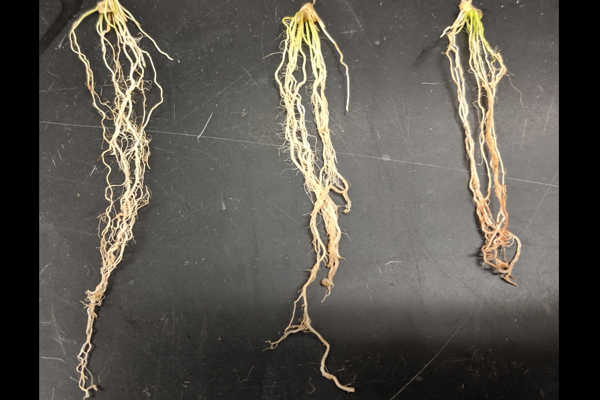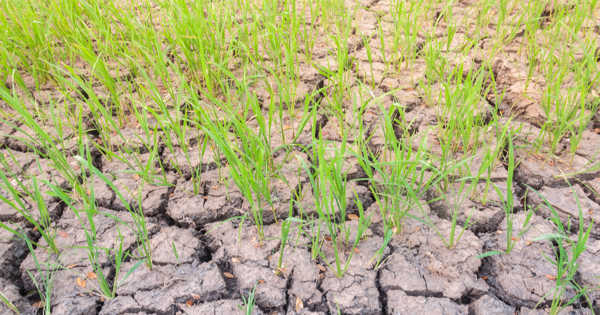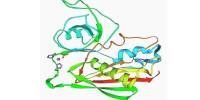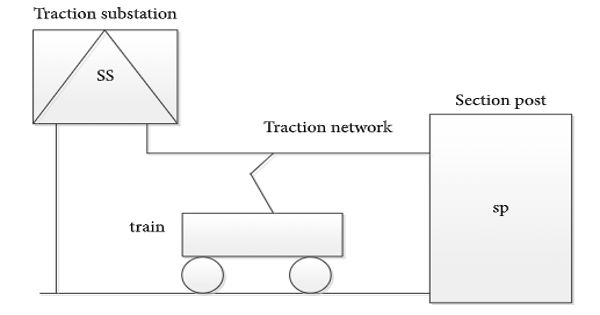Drought can have a long-term impact on the community of microbes that live in and around the roots of rice plants, according to a team led by UC Davis researchers. Because root-associated microbes assist plants in absorbing nutrients from the soil, the discovery could aid in understanding how rice responds to dry spells and how it can be made more drought-resistant. Nature Plants published this research.
The root microbiome of irrigated rice plants undergoes a series of changes as the plants grow and then stabilizes when the plant’s flowers. For a specific rice strain and geographic location, the sequence of changes in the root microbiome is consistent. Previous research has shown that when a growing rice plant is deprived of water, the succession of changes in the root microbiome comes to a halt.
Venkatesan Sundaresan, distinguished professor of plant biology at the University of California, Davis College of Biological Sciences, and colleagues studied changes in rice root microbes overtime when plants were water-deprived for 11, 21, or 33 days. According to Sundaresan, this type of intermittent drought is more common in rain-fed crops than in terminal drought.
Drought can have a lasting impact on the community of microbes that live in and around the roots of rice plants. The results show how plants may more quickly adapt to repeated intermittent drought.
Beneficial microbes found in and around crop roots could be powerful allies in the fight to keep plants alive during droughts, particularly as climate change worsens. However, before scientists can use these microbial partners to make crops more resilient, they must first understand how drought affects long-term relationships between crops and the root microbiome.
When water is removed, the microbe community changes as expected. More surprising, the changes persisted for weeks after the plants were re-watered. “Rice plants carry a ‘memory’ of the drought episode in their root microbiota, so plants that have experienced drought can be distinguished solely by their microbiomes,” Sundaresan explained.
As expected, the microbial communities in the current study began diverging from normal development the moment the water was cut off and continued to diverge for as long as the drought lasted. The root microbiomes quickly recovered after the two milder droughts ended. However, it took 50 days after the 33-day drought for the overall microbial composition inside the roots to resemble the microbiome of continuously watered rice roots.

Promoting root growth
The most abundant of these persistent microbes were cultured and sequenced by the team. It was a Streptomyces species that promotes plant root growth in response to drought. The DNA of bacteria contains a genetic code that is similar to plant genes for the growth hormone auxin.
“Because changes to the microbiome persist, root elongation continues even after the drought has ended. This better prepares the roots to tap into deep water “Sundaresan explained. After a drought episode, the roots of some drought-tolerant rice cultivars will continue to grow long enough to penetrate the hardpan, he said.
Because of the persistent changes, the microbiome response will be faster the next time drought strikes, because it has been altered since the first drought. According to the authors, as extreme weather events become more common, crops will be subjected to more intermittent droughts. Understanding what makes plants more resistant to drought conditions could aid in crop loss reduction.
The researchers are now investigating whether this Streptomyces strain can similarly lengthen roots in response to drought in other crops. Indeed, there is reason to believe that this microbe, or another Streptomyces, could be beneficial. A separate research team discovered that drought increases the abundance of bacteria from the same family as Streptomyces in the roots of a variety of plants.
Christian Santos-Medellin, Zachary Liechty, Joseph Edwards, and Bao Nguyen from the UC Davis Department of Plant Biology contributed to the paper, as did Bihua Huang and Bart Weimer from the Department of Population Health and Reproduction and the 100K Pathogen Genome Project at the UC Davis School of Veterinary Medicine. Sundaresan is also a member of the Department of Plant Sciences in the College of Agricultural and Environmental Sciences.
The research was funded by grants from the National Science Foundation and the United States Department of Agriculture.
















